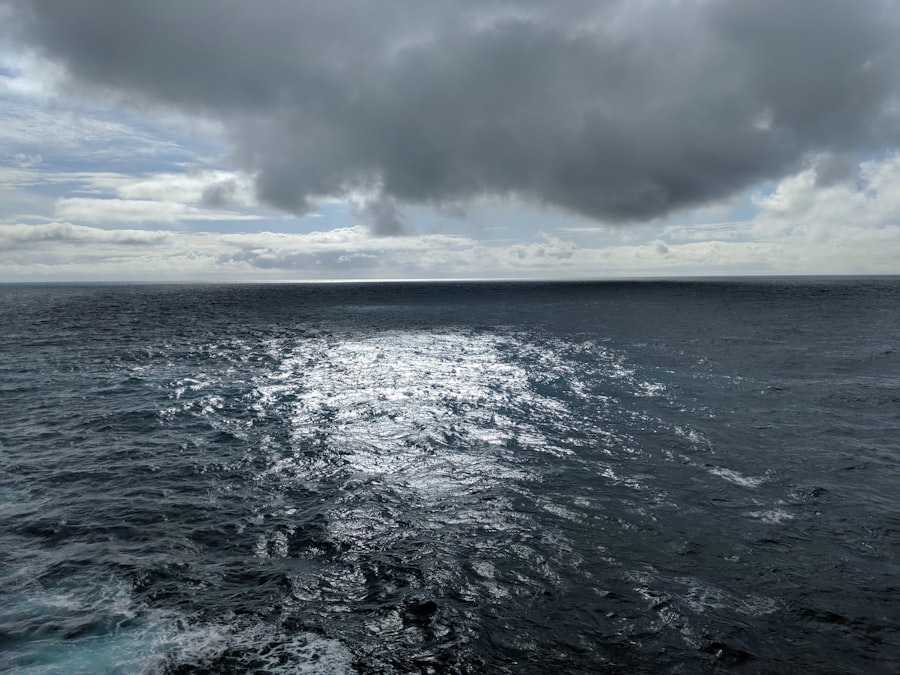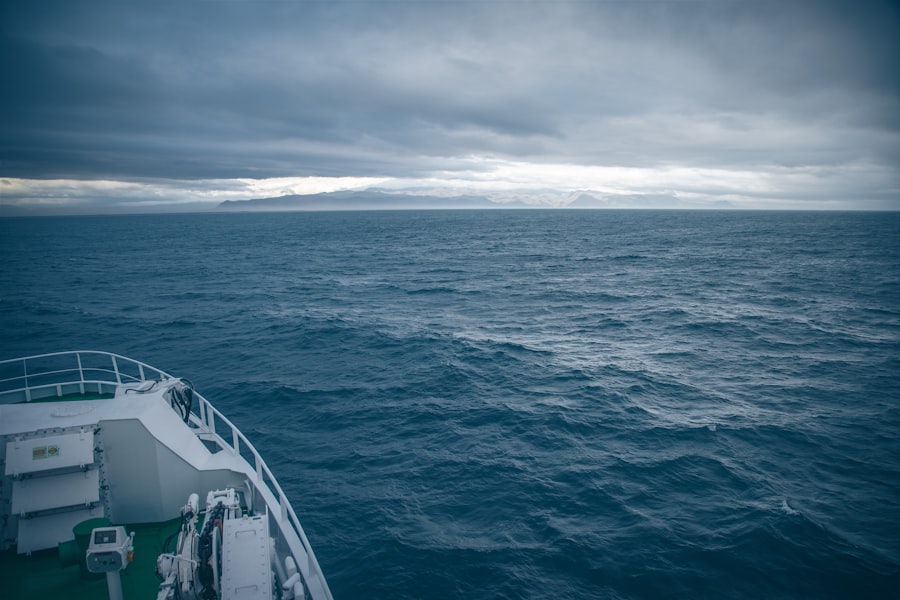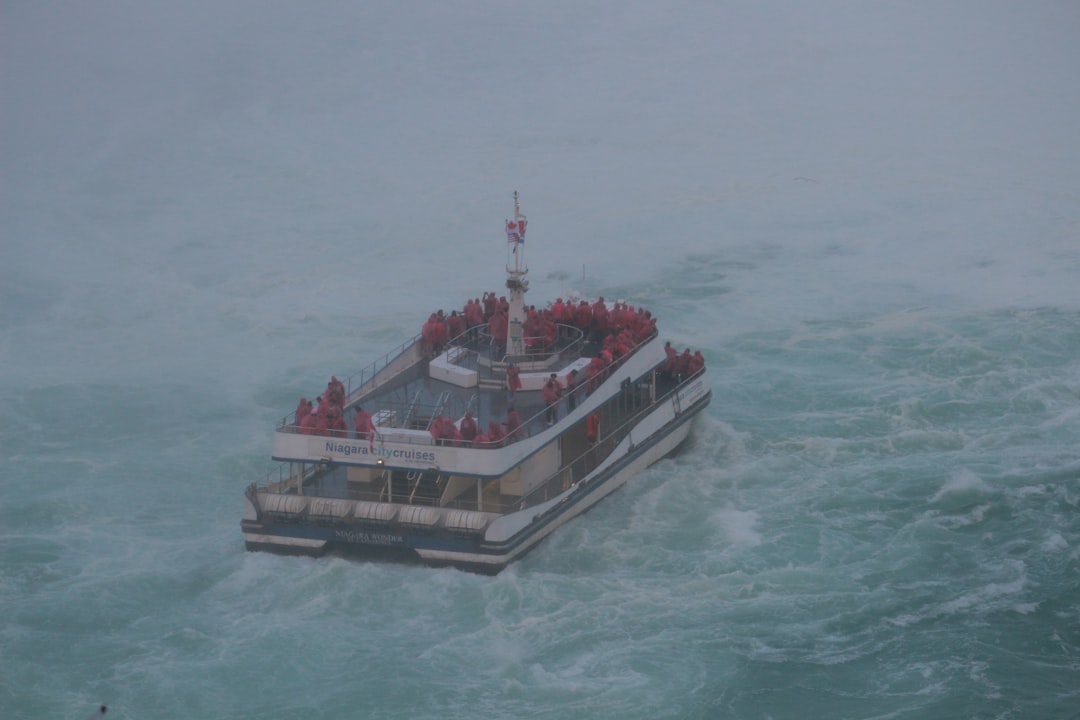The Drake Passage, a body of water that separates South America from Antarctica, is often regarded as one of the most treacherous maritime routes in the world. Stretching approximately 600 miles, this passage is notorious for its unpredictable weather patterns and turbulent seas. Sailors and adventurers alike have long spoken of the challenges posed by the Drake, where the confluence of the Atlantic and Pacific Oceans creates a unique and often violent environment.
The passage is not merely a geographical feature; it represents a formidable barrier that has tested the mettle of countless explorers throughout history. Crossing the Drake Passage is not for the faint of heart. The waters are known for their high waves and strong currents, which can turn a seemingly calm day into a tempestuous ordeal in a matter of hours.
For many, the journey through these waters is a rite of passage, a test of endurance and resilience. The Drake Passage has become synonymous with adventure, drawing those who seek to experience the raw power of nature firsthand. It is a place where the ocean’s might is on full display, and where the spirit of exploration thrives amidst the challenges.
Key Takeaways
- The Drake Passage is known for its challenging crossing due to strong winds and rough seas.
- January weather in the Drake Passage can be unpredictable, with potential for storms and high waves.
- Choosing the right vessel for the journey is crucial for safety and comfort during the crossing.
- Wildlife encounters in the Southern Ocean can include sightings of whales, seals, and various seabird species.
- Safety precautions and emergency plans are essential for any journey through the Drake Passage.
Weather Challenges in January
January marks the height of summer in the Southern Hemisphere, yet even during this season, the weather in the Drake Passage can be capricious. While some may expect milder conditions, they are often met with fierce winds and sudden storms that can arise without warning. The temperature can fluctuate dramatically, and the combination of cold Antarctic waters and warmer air can create dense fog and unpredictable squalls.
For those attempting to cross in January, understanding these weather patterns is crucial for ensuring a safe passage. The challenges posed by the weather in January are not to be underestimated. Sailors must remain vigilant and adaptable, ready to respond to changing conditions at a moment’s notice.
The winds can whip up waves that reach heights of 30 feet or more, making navigation treacherous. Additionally, the presence of icebergs and sea ice can complicate matters further, requiring careful planning and constant monitoring of environmental conditions. Those who embark on this journey must be prepared for anything, as the Drake Passage has a reputation for testing even the most seasoned mariners.
Choosing the Right Vessel for the Journey

Selecting an appropriate vessel for crossing the Drake Passage is one of the most critical decisions an adventurer can make. The choice of ship can significantly impact not only safety but also comfort during the journey. Vessels designed for polar expeditions are typically reinforced to withstand icy conditions and turbulent seas.
These ships often feature advanced navigation systems and stabilizers to help mitigate the effects of rough waters, providing a smoother ride for passengers and crew alike. In addition to structural integrity, the vessel’s size plays a vital role in its ability to navigate the Drake Passage. Smaller ships may offer greater maneuverability and access to remote areas, while larger vessels may provide more amenities and stability in rough seas.
Ultimately, the choice of vessel should align with the adventurer’s goals—whether seeking an exhilarating experience or a more leisurely exploration of this remarkable region. Regardless of size or design, however, all vessels must be equipped with essential safety features and emergency equipment to ensure a secure crossing.
Wildlife Encounters in the Southern Ocean
| Year | Number of Wildlife Encounters | Species |
|---|---|---|
| 2015 | 112 | Albatross, Penguins, Seals |
| 2016 | 98 | Whales, Dolphins, Seabirds |
| 2017 | 120 | Seals, Penguins, Albatross |
One of the most enchanting aspects of crossing the Drake Passage is the opportunity to encounter diverse wildlife that inhabits the Southern Ocean. This region is home to an array of marine life, including seals, whales, and various seabird species. Adventurers may be fortunate enough to spot majestic humpback whales breaching the surface or playful sea lions basking on ice floes.
The sight of these magnificent creatures in their natural habitat adds an unforgettable dimension to the journey. Birdwatchers will also find delight in the avian population that thrives in these waters. Albatrosses, petrels, and other seabirds are often seen gliding gracefully above the waves, riding the wind currents with remarkable ease.
These encounters with wildlife not only enhance the experience but also serve as a reminder of the fragile ecosystems that exist in this remote part of the world. Observing these animals in their natural environment fosters a deeper appreciation for biodiversity and highlights the importance of conservation efforts in protecting these unique habitats.
Safety Precautions and Emergency Plans
Given the unpredictable nature of the Drake Passage, safety precautions are paramount for anyone embarking on this journey. Comprehensive emergency plans should be established before departure, ensuring that all crew members are familiar with protocols for various scenarios, including severe weather conditions or medical emergencies. Regular safety drills can help prepare everyone on board for potential challenges they may face during their crossing.
In addition to emergency plans, equipping the vessel with essential safety gear is crucial. Life jackets, flares, first aid kits, and communication devices should be readily accessible to all passengers and crew members. Furthermore, maintaining an open line of communication with maritime authorities can provide valuable updates on weather conditions and navigational hazards.
Physical and Mental Preparation for the Journey

Preparing for a crossing of the Drake Passage requires both physical fitness and mental resilience. The journey can be physically demanding, with long hours spent at sea and potential bouts of seasickness due to rough waters. Adventurers should engage in regular exercise leading up to their departure to build stamina and strength.
Activities such as hiking, swimming, or even yoga can enhance overall fitness levels and improve balance—skills that may prove beneficial during turbulent conditions. Mental preparation is equally important when facing the challenges of crossing the Drake Passage. The psychological demands of being at sea can be significant; isolation from land and unpredictable weather can lead to anxiety or stress.
Practicing mindfulness techniques or engaging in relaxation exercises can help individuals manage their mental well-being during this adventure. By fostering both physical readiness and mental fortitude, adventurers can approach their journey with confidence and resilience.
Navigation and Route Planning
Effective navigation and route planning are essential components of successfully crossing the Drake Passage. Mariners must consider various factors when charting their course, including weather forecasts, ocean currents, and potential hazards such as icebergs or shallow waters. Utilizing advanced navigation technology can aid in plotting a safe route while allowing for real-time adjustments based on changing conditions.
Additionally, understanding tidal patterns and local maritime regulations is crucial for ensuring compliance with safety standards. Experienced captains often rely on their knowledge of historical weather patterns to anticipate potential challenges along their route. By combining modern technology with traditional seamanship skills, navigators can enhance their chances of a successful crossing while minimizing risks associated with this formidable passage.
The History and Significance of the Drake Passage
The history of the Drake Passage is rich with tales of exploration and discovery. Named after Sir Francis Drake, who navigated these waters in the late 16th century, this passage has long been a focal point for adventurers seeking to explore Antarctica’s mysteries. Over centuries, it has served as a vital route for scientific research expeditions and commercial shipping alike.
The significance of the Drake Passage extends beyond its historical context; it plays a crucial role in global ocean circulation patterns that influence climate systems worldwide. The mixing of warm and cold waters within this passage contributes to nutrient distribution across oceans, supporting diverse marine ecosystems.
Personal Accounts of Crossing the Drake Passage in January
Personal accounts from those who have crossed the Drake Passage in January reveal a tapestry of experiences marked by both challenge and triumph. Many recount moments of sheer exhilaration as they navigated through towering waves while others share tales of trepidation as storms rolled in unexpectedly. These narratives often highlight not only individual resilience but also camaraderie among crew members and fellow travelers who band together during difficult moments.
The stories shared by those who have braved this crossing often emphasize transformative experiences—how facing nature’s raw power can lead to profound personal growth. For some, it becomes a defining moment in their lives; an adventure that ignites a passion for exploration or deepens their appreciation for nature’s beauty and unpredictability. These personal accounts serve as powerful reminders that while crossing the Drake Passage may be fraught with challenges, it also offers opportunities for connection, reflection, and discovery.
Tips for a Successful Journey
For those planning to cross the Drake Passage in January, several tips can enhance their chances of success while ensuring an enjoyable experience. First and foremost, thorough research is essential—understanding weather patterns, vessel options, and safety protocols will empower adventurers to make informed decisions throughout their journey. Additionally, packing appropriate clothing layers is crucial; temperatures can vary significantly at sea, so being prepared for both warmth and cold will contribute to overall comfort.
Another valuable tip is to remain flexible during travel plans; adaptability is key when navigating unpredictable weather conditions in this region. Keeping an open mind about potential changes in itinerary or activities can lead to unexpected discoveries along the way. Finally, embracing a spirit of adventure will enrich every moment spent crossing this iconic passage—whether facing challenges head-on or reveling in moments of awe-inspiring beauty.
The Rewards of Conquering the Drake Passage
Successfully crossing the Drake Passage offers rewards that extend far beyond mere bragging rights; it provides an unparalleled sense of accomplishment and connection to nature’s grandeur. The thrill of navigating through one of Earth’s most challenging maritime routes fosters a deep appreciation for both personal resilience and environmental beauty. Many adventurers emerge from this experience transformed—imbued with newfound confidence and perspective gained from confronting nature’s might.
Moreover, witnessing breathtaking landscapes—rugged coastlines dotted with icebergs or expansive vistas teeming with wildlife—creates lasting memories that resonate long after returning home. The journey through the Drake Passage becomes more than just a crossing; it evolves into an adventure filled with discovery, camaraderie among fellow travelers, and moments that inspire awe at our planet’s wonders. Ultimately, conquering this notorious passage serves as a testament to human spirit—the desire to explore uncharted territories while embracing both challenges and rewards along the way.
Crossing the Drake Passage in January is an adventure that promises both excitement and challenges, as travelers navigate one of the most turbulent bodies of water in the world. For those interested in learning more about the geographical and environmental aspects of such a journey, a related article can be found on MyGeoQuest. This resource provides insights into various geographical phenomena and travel experiences. To explore more about the Drake Passage and other geographical wonders, you can visit the article on MyGeoQuest by clicking on this link.
WATCH HERE: Drake Passage: Earth’s Deadliest Waters Revealed
FAQs
What is the Drake Passage?
The Drake Passage is the body of water between the southern tip of South America and the northern tip of the Antarctic Peninsula. It is known for its rough seas and challenging sailing conditions.
Is it safe to cross the Drake Passage in January?
Crossing the Drake Passage in January can be challenging due to the rough seas and strong winds. It is considered one of the most difficult sea crossings in the world.
What are the weather conditions like in the Drake Passage in January?
In January, the weather in the Drake Passage can be unpredictable, with strong winds, rough seas, and the potential for storms. It is important to be prepared for cold temperatures and inclement weather.
What are the best ways to prepare for crossing the Drake Passage in January?
To prepare for crossing the Drake Passage in January, it is important to pack warm, waterproof clothing, and to be mentally and physically prepared for the challenging sailing conditions. It is also advisable to consult with experienced sailors or tour operators for advice and guidance.
What are some tips for a successful crossing of the Drake Passage in January?
Some tips for a successful crossing of the Drake Passage in January include staying informed about weather conditions, following the guidance of experienced sailors or tour operators, and being prepared for the possibility of seasickness. It is also important to have a positive attitude and be flexible, as weather conditions can impact the schedule.
